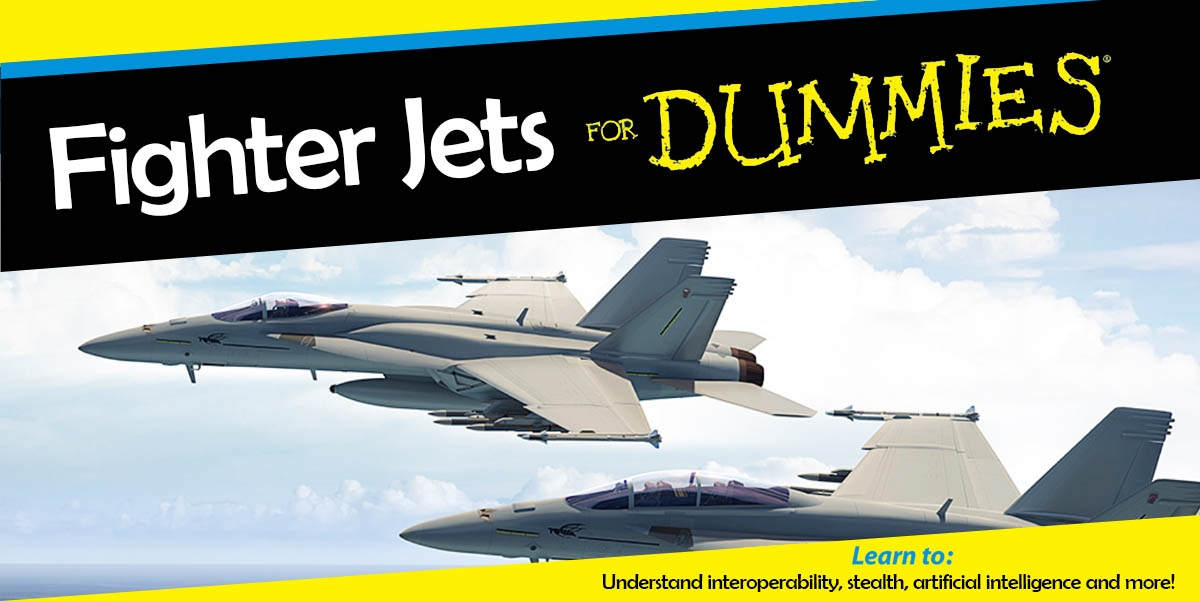
Fighter jets for dummies, and Canadian governments
Thinking of buying fighter jets? Here’s what you need to ask the salesperson before you decide.
Is it interoperable?
NATO and NORAD forces must be inter-operational, and therefore, so must their equipment. Like computers, military hardware is only useful if it can exchange data, effectively and reliably with other gear regardless of manufacturers. Shared data is critical and carefully protected, but beyond that interoperability for things like jets means refuelling, parts, maintenance, support facilities, etc. Buy a car, go to any gas station, put any brand of tires on it. NATO and NORAD achieved interoperability standards during the Cold War, so you’re good to go unless you’re ordering from N. Korea.
Is it stealth?
Stealth includes the shaping of the airframe to reduce radar cross-section and heat signature and a high-tech coating that keeps you from being detected by enemy radar. That design means that weapons must be carried internally in high threat environments, limiting total carriage. The coating must be carefully monitored and maintained to avoid blistering. Stealth technology must be designed in from the start and there will always be efforts to negate the stealth advantage through technology.
Is Artificial intelligence (AI) included?
Just about everything digital these days does employ AI to some degree. Early tests recently had AI co-pilots working alongside their human counterparts. There is scary research in this field aimed at increasing that role to almost completely remove humans from all flight and firing control. Next generation fighters include the capability to automatically control a number of drone wingmen through AI. Don’t expect the Schwartzinator to appear naked from the future to save us.
Is it good in a fight?
Speed and maneuverability are only part of it. You need to be able to detect, track, engage, and target, and that requires advanced sensors, radar, and weapons. An Active Electronically Scanned Array (AESA) radar, Electro-Optical Tracking Systems (such as Infrared Search and Track (IST) system), passive and active electronic warfare systems, advanced 360-degree cameras and advanced data-link systems make your opponent more detectable while keeping you less detectable. Most fights today will be Beyond Visual Range (BVR) but your choice should also be capable in a knife-fight-in-a-phone-booth Within Visual Range (WVR). That is also the most fun for fighter pilots, – in training.
One or two engines?
A single engine fighter is lighter and has less engine-related maintenance; and advanced engine technology has yielded safety records that compare with twin-engine fighters. In the now-less-likely event of ejection far from a rescue effort, personal survival will be compromised. Weapons loads and mission radius vary from aircraft-to-aircraft and there is no rule-of-thumb that differentiates single and twin-engine fighters. Either configuration can be loaded with external fuel and weapons and employ air-to-air refuelling for maximum range and payload.
What about cool displays?
There are several options. Cockpit displays are now like giant iPhones that are flexible and touch-controlled. A helmet-mounted display projects flight, targeting and defensive data directly onto the pilot's visor, and weapons systems are slaved to and follow the pilot’s eyes. This gives the pilot 360-degree visibility. More basic head-up displays project data onto a glass plane directly in front of the pilot. See the air space ahead of you and the display at the same time.
What about different roles and conditions?
That’s where Canadian Forces, especially the RCAF, are far more challenged than our allies. We defend the biggest domestic territory of all NATO members, with a high arctic, plus North America, plus Europe, plus international conflicts who knows where. Airbases are pretty standard and most fighters fall into the Conventional Take-Off and Landing (CTOL) category. But, overseas deployment can mean makeshift runways that cannot handle some jets and the same goes for aircraft carriers. Short take-off and landing (STOL) aircraft can use a runway of only 300 metres. STOVLs can take off on a very short runway and land vertically, but that limits the amount of ordinance and fuel they can carry. They use Thrust Vectoring (TV) and a point-able engine, making them very pricey, limiting their range, and requiring a special pad that can bear the heat of the landing.
And then there’s the matter of weaponry.
You want a wide range onboard to deal with whatever might be out there. Is your adversary within visual range (WVR) or beyond visual range (BVR)? There are air-to-air and air-to-ground missiles for both. Some are radar guided, optically guided and heat seeking; and some are Lock-On After Launch (LOAL) that allow built-in terminal guidance with progress being data-linked to a pilot’s displays. No matter what, you’re going to want advanced Identification Friend or Foe (IFF) systems that allow you and your pals to differentiate yourselves from the bad guys.
Hmmm, well I’m going to have to think about it. This is going to take forever, isn’t it!?







